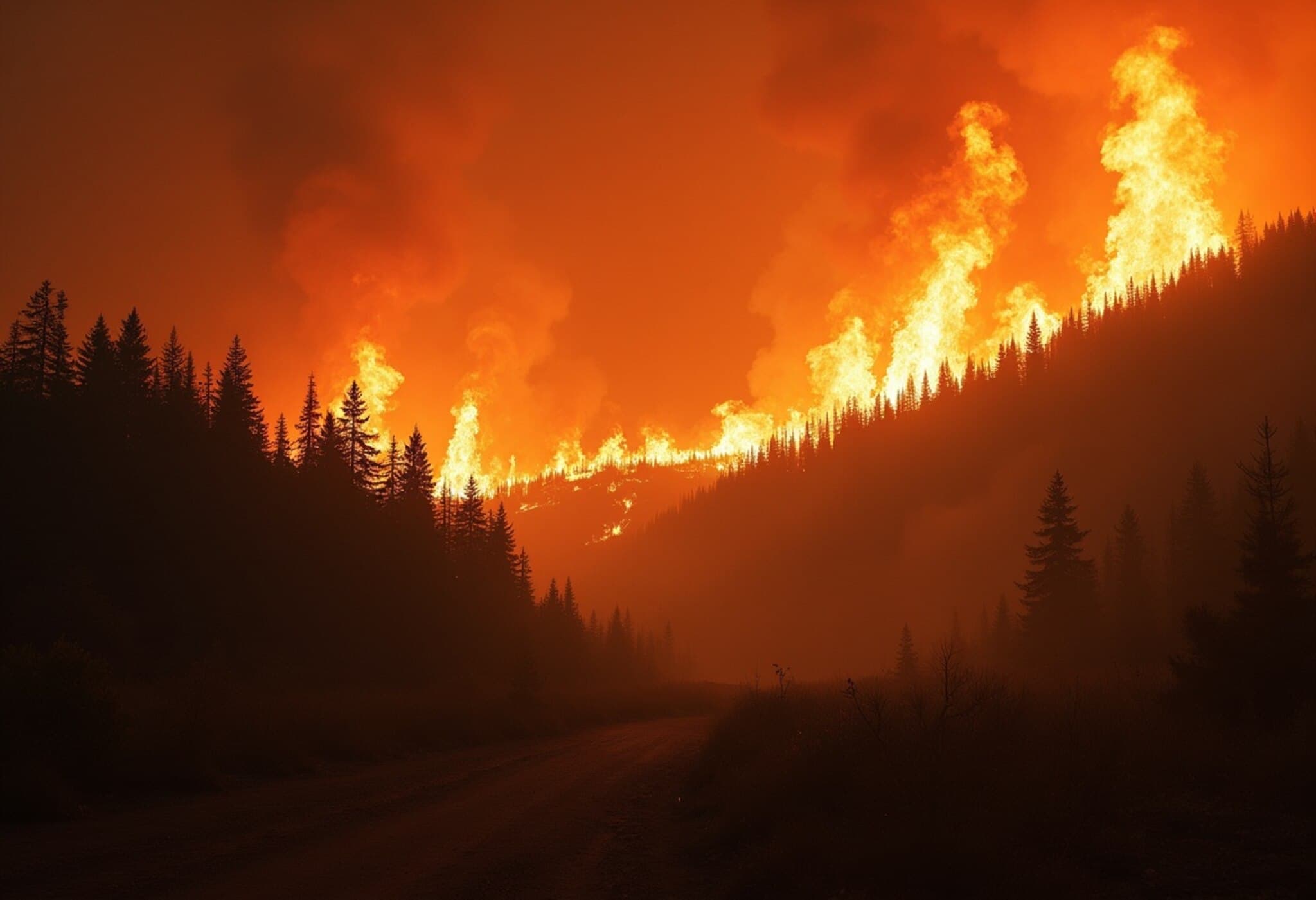Radioactive Wasp Nest Found at Savannah River Site Raises Environmental Questions
Columbia, South Carolina — In an unusual and concerning discovery, workers at the Savannah River Site (SRS)—a prominent former nuclear weapons facility near Aiken, South Carolina—encountered a wasp nest exhibiting dangerously high radiation levels. The incident underscores ongoing challenges in managing legacy contamination from America's Cold War nuclear manufacturing era.
Details of the Discovery
On July 3, routine radiation monitoring staff at the Savannah River Site detected radiation on a wasp nest located on a post adjacent to underground tanks that store liquid nuclear waste. The radiation levels measured were reportedly 10 times higher than federal regulatory limits. Fortunately, no radioactive wasps were found in or around the nest.
Workers promptly treated the nest with insecticide, removed it carefully, and disposed of it as radioactive waste in line with protocols established to mitigate risk to personnel and the surrounding environment.
Contextualizing the Radiation Source
According to officials from the US Department of Energy (DOE), the source of the contamination appears tied to “onsite legacy radioactive contamination” — residual radiation left behind from decades of nuclear materials production and storage at the site. The DOE emphasized that there was no evidence of any new leaks from the liquid waste tanks, suggesting the wasp nest likely came into contact with existing contaminated materials.
Environmental Watchdogs Sound the Alarm
The incident has nonetheless sparked concern from environmental groups such as Savannah River Site Watch, led by executive director Tom Clements. Clements criticized the official report for lacking detailed information about:
- Precisely how the wasp nest became radioactive
- Which radioactive substances were involved
- The possibility of undetected leaks elsewhere on site
Moreover, Clements pointed out the importance of identifying the specific type of wasp. Different species build nests out of various materials—some use soil, others paper or woody fibers—that could illuminate the contamination's pathway and possibly reveal hidden environmental hazards.
“I’m as mad as a hornet that Savannah River Site didn’t explain where the radioactive waste came from or if there is some kind of leak from the waste tanks that the public should be aware of,” Clements stated.
Assessing Public Safety Risks
The site’s current managing entity, Savannah River Mission Completion, reassured the public that the wasp nest was located well inside the facility's secured boundaries. Because wasps typically fly only a few hundred meters from their nests, it's believed the radiation did not pose a threat outside the site.
Experts also note that, had radioactive wasps been present, their contamination levels would likely have been substantially lower than the nest, given how radioactive particles tend to concentrate in nest materials rather than in insects themselves.
A Legacy of the Cold War
The Savannah River Site was originally established in the early 1950s at the height of the Cold War to manufacture plutonium triggers, or “pits,” for the US nuclear arsenal. Though weapon production has since ceased, SRS remains a critical component of the nation’s nuclear infrastructure, now focusing on:
- Nuclear fuel production for civilian reactors
- Environmental cleanup and waste management
Over its decades of operation, the facility has generated more than 625 million liters (165 million gallons) of liquid nuclear waste. Through evaporation and processing, this volume has been reduced significantly to about 129 million liters. Currently, 43 underground storage tanks remain active, with eight having been closed after decommissioning.
Broader Implications and Future Vigilance
This incident puts a spotlight on the complexities of managing radioactive contamination decades after initial nuclear operations. It raises pressing questions for regulators, environmental groups, and the public alike:
- How effectively are current monitoring systems detecting and preventing leaks?
- Could wildlife behavior inadvertently signal hidden contamination?
- What transparency measures are in place to keep local communities informed?
Understanding these dynamics is crucial to ensuring long-term safety and environmental stewardship as facilities transition from nuclear weapons production to cleanup and alternative nuclear uses.
Expert Commentary
Dr. Susan Franklin, a nuclear policy analyst with decades of experience in environmental risk assessment, notes, “The discovery of a radioactive wasp nest might seem odd, but it's a real-world indicator of how contamination can persist and interact with natural ecosystems. It’s a reminder that legacy nuclear sites require constant vigilance—not just for human exposure but for potential ecological impacts we may not fully understand yet.”
Editor’s Note
The radioactive wasp nest incident at the Savannah River Site is more than a curious footnote in environmental monitoring. It highlights ongoing concerns about managing the United States’ Cold War nuclear legacy, the nuances of ecological contamination, and the imperative of transparent communication with the public. As cleanup efforts continue, it remains essential for watchdog groups, the DOE, and local communities to collaborate on improving data transparency and environmental safeguards.
Will future monitoring include bioindicator species like insects to provide early warnings? How can policy evolve to integrate ecological indicators in nuclear site management? These are questions that require thoughtful dialogue in shaping a safer, more informed approach to nuclear site stewardship.












